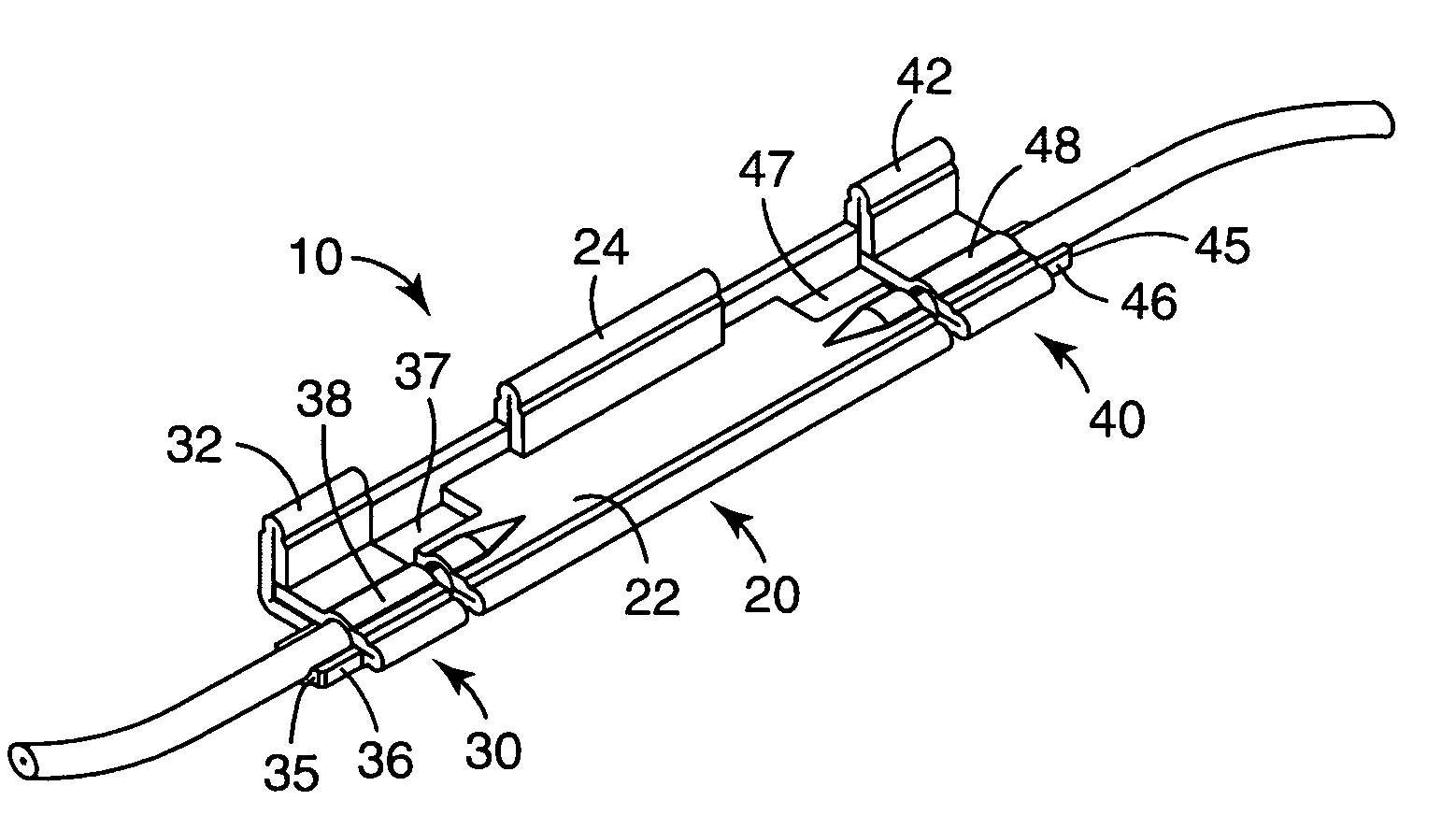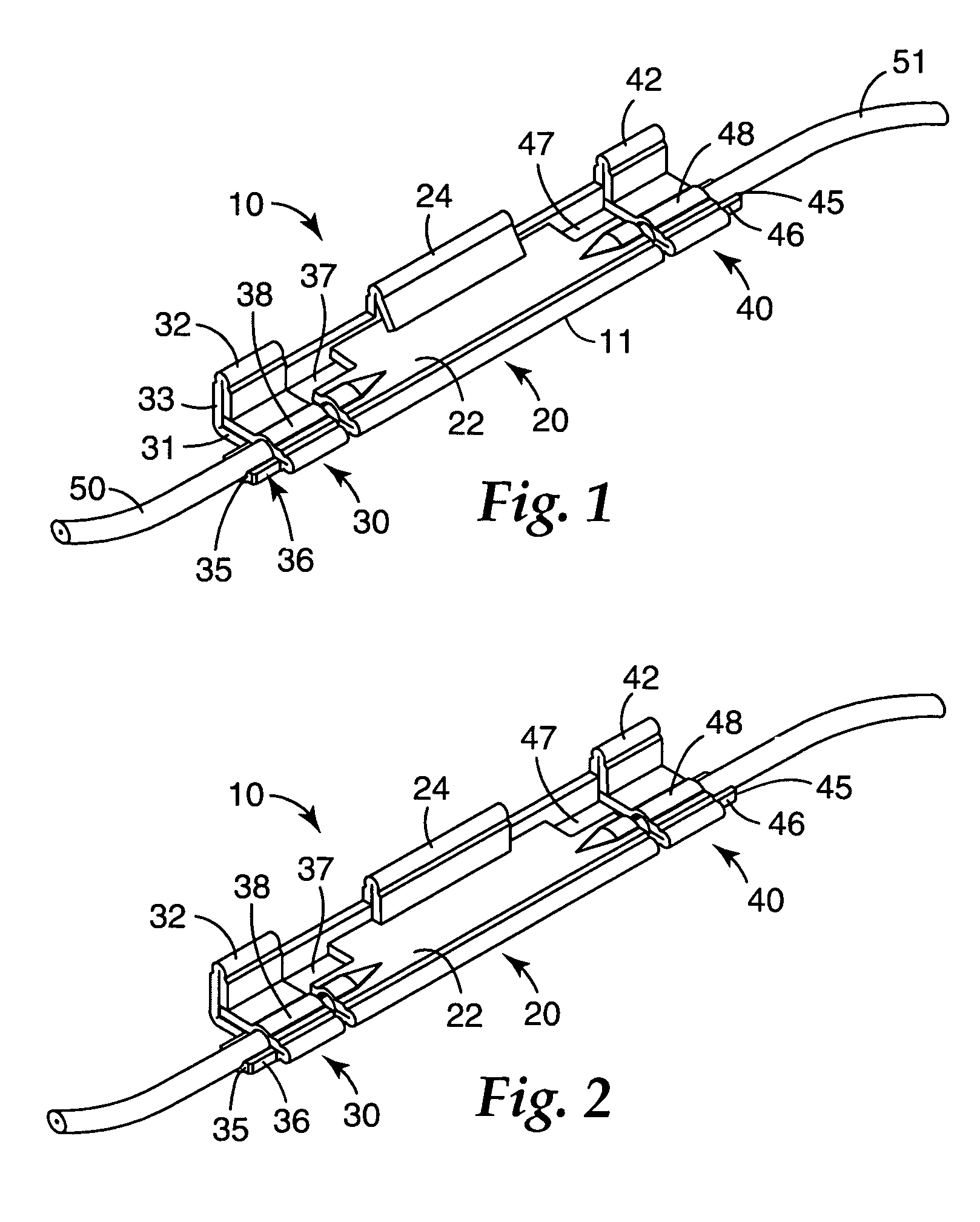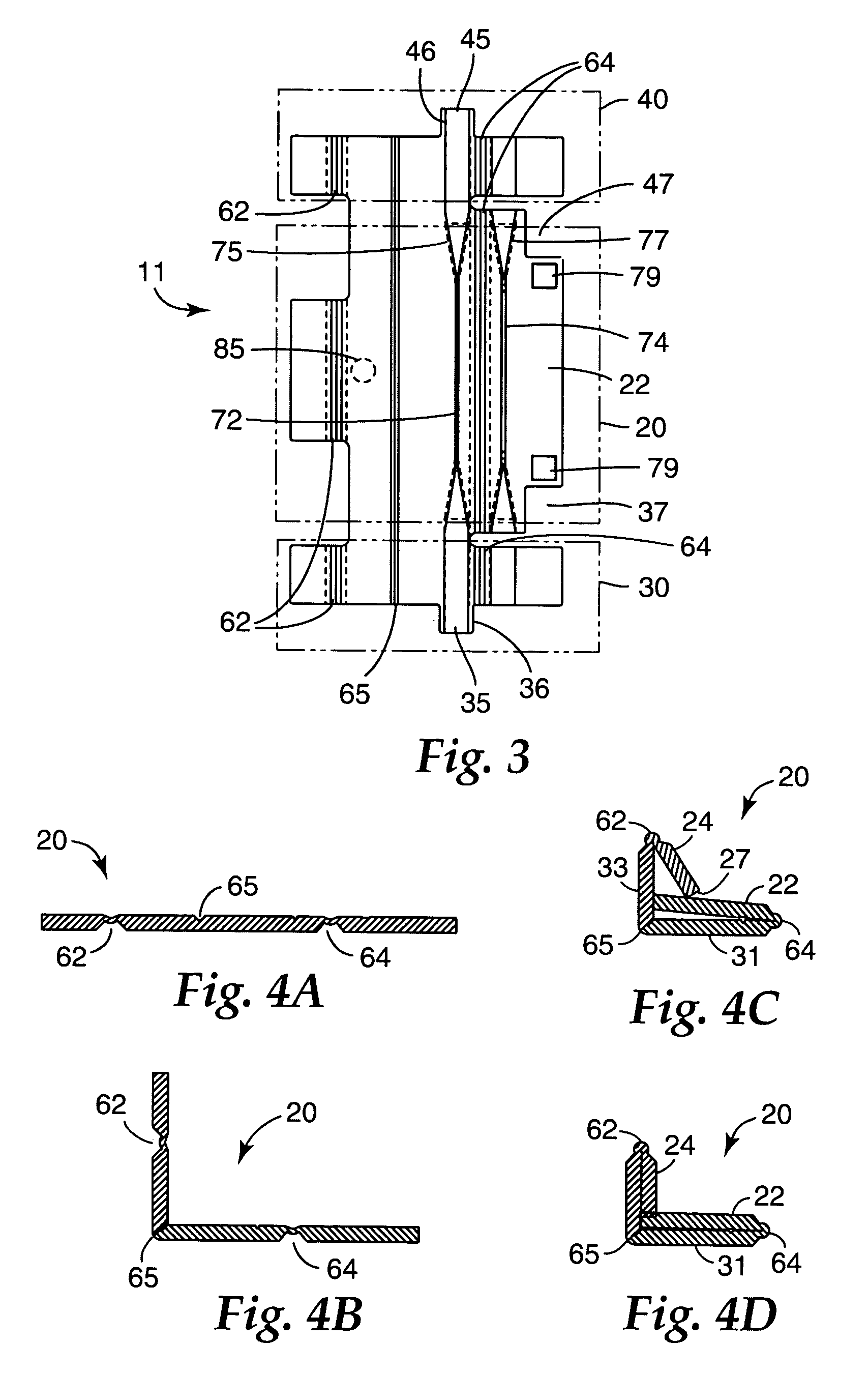Fiber splice device
a fiber splicing and optical fiber technology, applied in the field of fiber splicing devices, can solve the problems of difficult fusion splicing in these types of locations and requiring battery power
- Summary
- Abstract
- Description
- Claims
- Application Information
AI Technical Summary
Benefits of technology
Problems solved by technology
Method used
Image
Examples
first embodiment
[0039]In accordance with exemplary embodiments, in the closed position, stress is induced in the hinge areas on both the locking mechanism and the fiber clamping plate, which forces the respective plates towards an open portion. The structure of the splice device of the present invention is designed to counteract these forces, one opposing the other, to maintain closure of the splice device through the use of a self-locking mechanism. For example, FIGS. 6A and 6B illustrate a self-locking mechanism, where a taper 26A is formed on the tip of the fiber clamping plate 22. This design creates a ramped recess at or near the intersection between the locking plate 24 and the fiber clamping plate 22. In an alternative embodiment, FIGS. 6C and 6D show a raised structure 26B, such as a bump or ridge, that is formed (e.g., by embossing, stamping, coining, or the like) on the surface of the fiber clamping plate 22 at or near the intersection between the locking plate 24 and the fiber clamping p...
second embodiment
[0042]FIG. 8 shows different exemplary fibers 52, 53, such as 250 micrometer diameter buffered fibers, in a second embodiment end port designed for receiving 250-micrometer diameter buffered fibers.
[0043]According to a further alternative embodiment, strain relief can also be accomplished using a modified design and procedure. For example, as shown in FIGS. 9A and 9B, the end port sections 30, 40 can have “open” and “closed” positions, similar to the open and closed positions of the fiber splicing section 20. In the open position, e.g., as shown in FIG. 9A, the fiber 50, 51 (here, an exemplary 900 micrometer outer diameter buffered silica fiber) can be inserted in end ports 35, 45. After the splice is actuated in the fiber splicing section 20, the end port sections 30, 40 can be moved into a closed position by actuating the end port locking plates 32, 42, in a manner similar to that described above. In addition, self-locking mechanisms, such as those described above, can also be emp...
PUM
 Login to View More
Login to View More Abstract
Description
Claims
Application Information
 Login to View More
Login to View More - R&D
- Intellectual Property
- Life Sciences
- Materials
- Tech Scout
- Unparalleled Data Quality
- Higher Quality Content
- 60% Fewer Hallucinations
Browse by: Latest US Patents, China's latest patents, Technical Efficacy Thesaurus, Application Domain, Technology Topic, Popular Technical Reports.
© 2025 PatSnap. All rights reserved.Legal|Privacy policy|Modern Slavery Act Transparency Statement|Sitemap|About US| Contact US: help@patsnap.com



